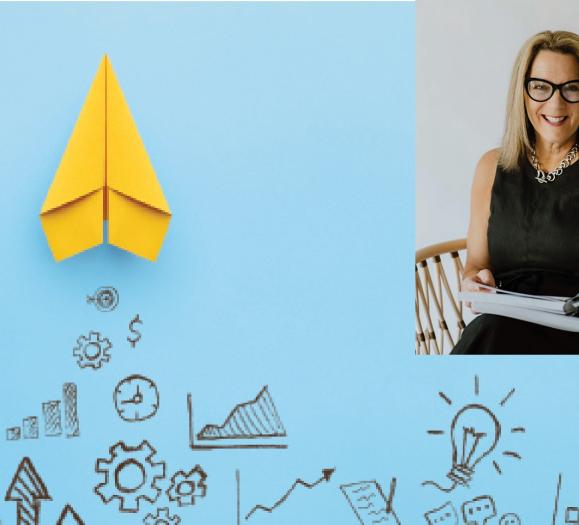Like so many of the designers we speak with, Gail Doby did not walk a straight line into her interior design business … or the business coaching she does now. After a couple of decades as a designer, Doby saw a need among the design communities she was a part of, and with her business strengths, realized it was her calling to help designers who, while creative, possibly needed some assistance on the business side of design.
That business acumen comes naturally to Doby, who has a finance degree and worked for Fortune 500 companies for a number of years. With a good eye for design, however, she was soon helping friends update their homes, which led to design consulting for such commercial clients as American Airlines.
Realizing her love for design, she went back to school for a design degree after getting married and moving to Denver. “I essentially started doing design in 1987, and then decided I’ve really got to get this going,” says Doby. “By 1992, I had started my own business.” That quickly grew to eight people in the business, and Doby credits her success as a designer in large part to having been around and on so many sides of the design industry for a long time.
Fast forward to 2007, and Doby saw the industry and her clients’ expectations begin to change. “Everything was changing because the Internet was becoming a bigger deal,” Doby says. “I was very aware of social media and I started my first blog in 2007.”
As the business landscape began to change, Doby realized there was a need to address these issues that were challenging her design business as well those of her designer friends and colleagues.
“If we could solve these problems, we could help others solve these problems too,” she decided.
Starting this new coaching business 13 years ago (2008) just as the economy came crashing down concerned Doby, but she felt, “If we can make it through this, we can make it through anything.”
Business has been robust ever since, so much so, that Doby hung up her designer business (with the exception of projects around her own home) to solely focus on helping the designers who were coming to her for business advice. “I love helping people get those lightbulb moments,” she says. “Most don’t love the business side. Design is a passion for them. They don’t think of themselves as a CEO.”
Tapping into this insight, Doby focuses on helping her clients become those successful business people. After working with her, she says, “They thought design was their thing. Then they become really passionate about their business. Client satisfaction, great design work and building a team. That’s a different level of design. They find that passion around doing something that’s not all about them.”
Since taking on other designers’ business challenges, Doby has worked to develop a curriculum that encompasses the facets designers need to embrace to move their businesses forward.
To deliver her knowledge, she has developed several outlets where designers can connect with her and learn more about the business skills they need. “I think some people have a natural business talent but it’s not that common,” Doby says, adding that people
learn in different ways — observation, by doing, by reading books, coaching or masterminds, for example.
“I understand where they’re coming from,” she adds, noting her many years on the other side while she was a designer herself. “It hasn’t changed that dramatically. We just have to be really good at running at business.”
What are some business success skills you need?
Personality Skills: “You have to have the psychology part of it,” she says, noting that that includes grit, determination, resilience, perseverance and problem solving skills.
Business Acumen: This is a wide bucket that includes marketing, sales, financials and the psychology of working with clients, subcontractors and a team. “You have to be able to work with people,” she notes. “You also have to understand how to read your financials.”
Project Management: This includes the organizational skills, process skills and the ability to communicate and manage people. “You need to be able to strategically think through a lot of things to manage a project properly.”
Doby offers a wide array of ways that clients can work with her, including VIP Experiences, Mastermind groups and even a Genius Exchange. Doby says it can take one to three years to apply everything her clients have learned from a VIP experience. She also coaches clients one on one, many of whom have stayed with her for years.
“Even if they’ve been doing it for decades, we’re going to rethink their designer businesses from the ground up with the financial underpinnings they need for success,” she says. “You have to have the structure in place. It’s a fascinating process. People get very emotional. We want them to understand that a business is very emotional because you are connected to what you do,” she adds. The skills she teaches also help her clients to gain the confidence they need to deal with clients and whatever challenges they’ll need to solve.
One of the exercises Doby does with her clients is to take them into the future. “We want them to imagine what they want to accomplish,” she says. “If they don’t do that, they won’t get to the level they want to be at.”
From there, designers have to acknowledge their strengths and weaknesses in business to move forward. According to Doby, there is a lot to understand.
“You have to be willing to not be perfect,” she says. “You have to be willing to fail a lot, but fail forward. If it were easy, everyone would do it.”
Doby’s Top Takeaways
- Designers need to have the right mindset. They need to see the difference between where they are now and where they want to go.
- They need to have their own Creative Value Blueprint, including a financial model around a profitable pricing strategy. Many people don’t understand what it costs to run a business. You want to be profitable from the beginning.
- Designers need to have a team. You can’t really build a business if it’s just you. It’s a business if you have a team. We all start on the shoestring. I wasn’t good at all the things that needed to be done. Start by outsourcing until you can afford to hire. Look at where you need to add team members so they can grow in the same direction with you.
Introducing Business Breakthrough: Your Creative Value Blueprint to Get What You’re Worth
To help as many designers as possible gain success, Doby has introduced a new book, Business Breakthrough: Your Creative Value Blueprint to Get What You Are Worth, which came out in a Kindle edition this past month — the paperback will be available in June. “I realized that as busy as I am, I can only serve so many people a year. To help more people, I had to write books,” Doby notes. “This is my first with two more behind it. They’ll be sequential to help people build their businesses.”
Business Breakthrough is designed to provide a business model that delivers the right balance of creativity, seamless processing and pricing options that readers can apply to earn more money with less stress. Having a Creative Value Blueprint can help designers understand what it really costs to run a business, and they can become confident in what they charge. “There is a friction between the reality of what we do as a profession and the unrealistic expectations of some clients,” Doby notes.
She wrote Business Breakthrough to help designers who want to build a really successful business. She points to a statistic that 60 percent of small businesses don’t actually make a profit. Her Creative Value Blueprint is designed to ensure that doesn’t happen.
The new book is part textbook and part workbook, Doby continues. What it really provides, just like her coaching options, is a framework. “Designers need to realize they are ready to build a real business.” Understanding the business side, she adds, will give designers the structure to build a creative business and, as a result the confidence to get compensated correctly for the work they do. Business Breakthrough allows her to offer a proven system that if they put it in place can help take all the pieces and parts and put them together. “You have to start
with a good foundation for a business,” she says.
Business Breakthrough will be followed by two more books, one about rapid growth and the third book about beyond business, where readers get to consider their purpose and what their lives might look like when they have reached their goals. “It’s about finding your purpose and building a successful business to support that purpose,” Doby says. “We have clients doing a lot of charitable things. That’s when it becomes so meaningful. It’s not just about building a business; it’s about giving back.”







